Typeerror A Bytes-Like Object Is Required Not ‘Str’
Python is a versatile programming language used for various purposes. One common error that developers encounter is the “TypeError: a bytes-like object is required not ‘str'”. This error occurs when a function or method expects a bytes-like object but receives a string instead. In this article, we will explore the concept of bytes-like objects, understand the difference between string objects and bytes-like objects, and delve into common scenarios where this TypeError occurs. Additionally, we will discuss how to convert strings to bytes-like objects and vice versa, handle binary data using the struct module, work with file operations and bytes-like objects, utilize APIs that handle data in a bytes-like format, and finally, present best practices for preventing and debugging this TypeError.
Exploring the concept of bytes-like objects in Python
In Python, a bytes-like object is a sequence of integers in the range of 0-255. This sequence represents binary data and is used to handle tasks involving network communication, file handling, serialization, and more. Bytes-like objects in Python can be created using the `bytes()` constructor or the `bytearray()` constructor. These objects are immutable and mutable, respectively.
How string objects differ from bytes-like objects
While strings in Python represent a sequence of characters, bytes-like objects represent binary data. The main difference between the two is the encoding. Strings are typically encoded in UTF-8 or ASCII encoding, while bytes-like objects can contain any binary data. This difference in encoding is what leads to the “TypeError: a bytes-like object is required not ‘str'” error.
Common scenarios where the ‘bytes-like object is required’ TypeError occurs
The ‘bytes-like object is required’ TypeError often occurs when working with functions or methods that expect binary data. For instance, when working with socket communication, sending data over networks, reading or writing binary files, or working with APIs that require binary data. It is crucial to ensure that the data being passed is in the correct format to avoid this TypeError.
Converting strings to bytes-like objects using the encode() method
To convert strings to bytes-like objects, we can use the `encode()` method. The `encode()` method takes an encoding as a parameter and returns a bytes-like object. For example:
“`python
string_data = “Hello, World!”
bytes_data = string_data.encode(‘utf-8′)
“`
In this example, the `encode()` method converts the string “Hello, World!” into a bytes-like object using the UTF-8 encoding.
Decoding bytes-like objects to strings using the decode() method
To decode bytes-like objects back to strings, we can use the `decode()` method. The `decode()` method takes an encoding as a parameter and returns a string. For example:
“`python
bytes_data = b’Hello, World!’
string_data = bytes_data.decode(‘utf-8’)
“`
In this example, the `decode()` method converts the bytes-like object back to a string using the UTF-8 encoding.
Handling binary data with the struct module in Python
The struct module in Python provides a way to handle binary data more efficiently. It allows developers to pack and unpack binary data into a byte-like object. This can be useful when working with network protocols, file formats, or low-level data manipulation. The struct module provides functions like `pack()` and `unpack()` to convert data between bytes-like objects and Python data types.
Working with file operations and bytes-like objects
When working with files in Python, it is important to distinguish between reading or writing text data and binary data. Text data is usually handled with the `open()` function using the default mode, which is ‘r’ (read) or ‘w’ (write). On the other hand, binary data is handled using the ‘rb’ (read binary) or ‘wb’ (write binary) modes. To avoid the TypeError, it is crucial to use the appropriate mode when working with files that contain binary data. Additionally, the `read()` and `write()` methods of file objects can be used to read or write binary data.
Using APIs and handling data in bytes-like format
Some APIs require data to be in a bytes-like format for communication. When working with such APIs, it is essential to convert the data to bytes-like objects using the methods mentioned earlier. This ensures that the binary data is correctly formatted and sent to the API.
Best practices for preventing and debugging the ‘bytes-like object is required’ TypeError
To prevent this TypeError, it is crucial to understand the expected data format for each function or method you are using. Read the documentation carefully and ensure that you are passing the appropriate data type. When encountering this error, check the type of the data you are passing, and if it is a string, convert it to a bytes-like object using the `encode()` method. Additionally, utilizing the `decode()` method when receiving binary data can help in successfully decoding it to a string.
FAQs:
Q: How can I split a string when encountering a “TypeError: a bytes-like object is required not ‘str'” error?
A: To avoid this error, convert the string to a bytes-like object before splitting it. You can do this by calling the `.encode()` method on the string.
Q: How to handle a “TypeError: a bytes-like object is required not ‘str'” when trying to upload a file?
A: When uploading a file, ensure that the file is being read in binary mode (‘rb’) and converted into a bytes-like object using the `.read()` method of the file object.
Q: What should I do if I encounter a “TypeError: a bytes-like object is required not ‘str'” while reading a CSV file?
A: When reading a CSV file, make sure to open the file in binary mode (‘rb’) and decode the bytes-like object to a string using the `.decode()` method before parsing it as a CSV.
Q: How can I handle the “TypeError: a bytes-like object is required not ‘str'” in a stable diffusion scenario?
A: In a stable diffusion scenario, ensure that the data being passed is in the proper binary format. Convert any strings to bytes-like objects using the `.encode()` method if needed.
Q: What should I do if I encounter a “TypeError: a bytes-like object is required not ‘str'” when trying to decode a NoneType object to a string?
A: The error suggests that you are trying to decode an object of type ‘NoneType’ instead of a bytes-like object. Make sure that the data you are passing to the `.decode()` method is not None.
Q: How can I convert a string to a bytes-like object in base64 encoding?
A: To convert a string to a bytes-like object in base64 encoding, you can use the `base64.b64encode()` function. This function takes a bytes-like object as input and returns a bytes-like object in base64 encoding.
Q: How can I convert a string to bytes in Python?
A: To convert a string to bytes in Python, you can use the `encode()` method with the appropriate encoding. For example, `string_data.encode(‘utf-8’)` converts the string to bytes using the UTF-8 encoding.
Q: I encountered the error “TypeError: a bytes-like object is required not ‘str'” in a Docker-compose scenario. How can I resolve it?
A: In a Docker-compose scenario, this error might occur if you are passing a string instead of the expected bytes-like object. Ensure that the data being passed is properly formatted and convert any strings to bytes-like objects using the appropriate methods like `.encode()`.
In conclusion, the “TypeError: a bytes-like object is required not ‘str'” error can be encountered in various scenarios where binary data handling is involved. By understanding the concept of bytes-like objects, converting strings to bytes-like objects, decoding bytes-like objects to strings, and utilizing techniques like the struct module, file operations, and handling APIs, developers can successfully prevent and debug this TypeError. It is important to ensure that the correct data format is used for each function or method, and to carefully read and follow the documentation of the libraries or APIs being utilized.
How To Fix Typeerror A Bytes-Like Object Is Required Not ‘Str’
What Is A Byte Like Object Not Str?
In the world of programming, dealing with different types of data is essential. One such data type is the byte-like object, which often causes confusion among developers, especially when compared to the more commonly known string (str) object. In this article, we will dive deep into the topic of byte-like objects, exploring their characteristics, use cases, and how they differ from strings.
Understanding Byte-like Objects:
A byte-like object is a data type used to represent sequences of bytes in Python. It is an integral part of the language’s core libraries and is widely used in various scenarios. In simple terms, a byte-like object can be thought of as a collection of bytes, where each byte represents a small unit of digital information.
The byte-like object, commonly denoted as bytes, can contain any binary data. This includes text data encoded in various character encodings, such as ASCII or UTF-8, as well as non-text binary data like images or audio files. Unlike strings, byte-like objects are mutable, allowing the modification of individual bytes within the sequence.
Comparing Byte-like Objects to Strings:
1. Representation:
The most noticeable difference between a byte-like object and a string is their representation. While strings are represented within quotation marks, byte-like objects are represented using the “b” prefix followed by quotation marks. For example, a string would be represented as “Hello World,” whereas a byte-like object would be represented as b”Hello World”.
2. Character Encoding:
Strings are a sequence of characters that are encoded using a specific character encoding, such as UTF-8. In contrast, byte-like objects represent raw binary data and do not have an inherent character encoding. Instead, they can hold encoded text or non-text binary data. The text stored in byte-like objects can be converted to a string when required using appropriate decoding methods, such as the decode() function.
3. Immutability vs. Mutability:
Another significant difference lies in their mutability. Unlike strings, which are immutable and cannot be changed once created, byte-like objects are mutable. This means that individual bytes within a byte-like object can be modified directly.
Use Cases for Byte-like Objects:
Byte-like objects find applications in various programming domains. Here are a few common scenarios where they play a vital role:
1. Network Communication:
When working with network protocols, byte-like objects are used to send and receive data packets. These packets may include a combination of text and binary data. Byte-like objects facilitate efficient transmission and manipulation of such data, ensuring smooth communication between network-based systems.
2. File I/O Operations:
Byte-like objects are extensively used in file input/output (I/O) operations. When reading or writing files that contain binary data or encoded text, byte-like objects provide a means to handle and process the data byte by byte. This is particularly helpful while working with media files or when extracting specific information from large datasets.
3. Cryptography:
Cryptography often involves operating on raw binary data. Byte-like objects serve as an ideal data type in encryption and decryption algorithms. Their mutability allows for direct manipulation of the data during cryptographic operations, ensuring the security and integrity of sensitive information.
FAQs:
Q: Can byte-like objects store Unicode characters?
A: Yes, byte-like objects can store Unicode characters. However, the characters must be encoded before being stored in the byte-like object using a suitable character encoding scheme like UTF-8.
Q: How can I convert a byte-like object to a string in Python?
A: To convert a byte-like object to a string, you can use the decode() function, specifying the required character encoding. For example, if you have a byte-like object named “bdata” and want to convert it to a string, you can use the following code: bdata.decode(‘utf-8’).
Q: Are byte-like objects memory-efficient?
A: Byte-like objects are generally memory-efficient. Since they represent raw binary data, they do not require additional memory for character encoding. However, keep in mind that large byte-like objects can still consume a significant amount of memory, especially when dealing with files or network data.
Q: How can I modify a specific byte within a byte-like object?
A: You can modify a byte within a byte-like object by converting it to a bytearray, which is a mutable data type in Python. Once converted, you can change individual bytes using indexing, similar to modifying elements in a list. After making the necessary modifications, you can convert it back to a byte-like object if required.
In conclusion, understanding byte-like objects is crucial for effectively handling binary data and performing operations beyond string manipulation. Knowing their characteristics, differences from strings, and various use cases will empower developers to tackle real-world programming challenges efficiently.
Is A String A Bytes Like Object In Python?
Python is a versatile and powerful programming language that offers several data types to handle different kinds of information. Two fundamental and commonly-used data types in Python are strings and bytes. Strings are used to represent and manipulate textual data, while bytes are used to handle binary data. While strings and bytes may seem similar, they are fundamentally different types in Python.
In Python 2.x, strings were a sequence of bytes, which made it possible to manipulate both text and binary data using the same data type. However, in Python 3.x, strings were changed to be sequences of Unicode characters, while bytes remained as a distinct data type for handling binary data. This change was made to improve support for internationalization and to handle the variety of character encodings used in different languages.
A string in Python is a sequence of Unicode characters, encoded using the UTF-8 encoding by default. UTF-8 is a variable-width encoding scheme that represents characters from the Unicode character set using one to four bytes. This allows Python strings to handle characters from a wide range of languages and scripts.
On the other hand, a bytes object in Python is a sequence of integers, representing raw binary data. Each integer in the bytes object represents a byte, which can have a value between 0 and 255. This makes bytes objects suitable for operations that deal with binary data, such as reading and writing files, network communication, and cryptographic operations.
Even though strings and bytes are different data types, Python provides methods to convert between them. The `encode()` method can be used to convert a string to a bytes object, using a specified encoding such as UTF-8 or ASCII. Similarly, the `decode()` method can be used to convert a bytes object to a string, using the appropriate encoding. These conversion methods allow developers to seamlessly move between text and binary data in their Python programs.
To summarize, a string in Python is not a bytes-like object, but rather a Unicode sequence encoded as UTF-8 by default. Bytes objects, on the other hand, represent raw binary data as a sequence of integers. However, Python provides methods to convert between strings and bytes, allowing for easy manipulation of both text and binary data.
FAQs:
Q: Can I perform string operations on bytes objects?
A: No, you cannot directly perform string operations on bytes objects since they are different data types. If you need to manipulate binary data as if it were textual data, you would first need to decode the bytes object into a string, perform the desired operations, and then encode it back into bytes if necessary.
Q: Can I convert any string to bytes using the `encode()` method?
A: The `encode()` method can be used to convert strings to bytes, but it requires specifying an encoding. If the string contains characters that are not compatible with the specified encoding, a `UnicodeEncodeError` will be raised. It is important to choose the appropriate encoding based on the characters present in the string.
Q: Are there any disadvantages to using strings for binary data in Python?
A: While it is possible to store binary data in strings by encoding it as base64 or other encoding schemes, it is generally more efficient to use bytes objects for binary data. Strings have additional overhead due to their variable-width encoding, which can impact performance when dealing with large amounts of binary data.
Q: How can I determine the encoding of a string or bytes object?
A: Python provides the `sys.getdefaultencoding()` function, which returns the default string encoding used by the system. Additionally, you can inspect the `encoding` attribute of a string or bytes object to determine its specific encoding. It is important to note that bytes objects do not have an intrinsic encoding; the encoding is only relevant when converting them to a string.
In conclusion, while strings and bytes may appear similar at first glance, they are distinct data types in Python. Strings are sequences of Unicode characters, encoded as UTF-8 by default, while bytes objects represent raw binary data. Python offers methods to convert between strings and bytes to handle different types of data efficiently. Understanding the differences between these two data types is vital for effectively manipulating both textual and binary information in Python.
Keywords searched by users: typeerror a bytes-like object is required not ‘str’ A bytes like object is required not str split, Typeerror a bytes like object is required not uploadfile, A bytes like object is required not str csv, A bytes like object is required not str stable diffusion, Decoding to str need a bytes-like object nonetype found, A bytes-like object is required, not ‘str base64, String to byte Python, Docker-compose a bytes-like object is required, not ‘str
Categories: Top 52 Typeerror A Bytes-Like Object Is Required Not ‘Str’
See more here: nhanvietluanvan.com
A Bytes Like Object Is Required Not Str Split
When working with Python programming language, you might have come across situations where you need to split a string into a list of substrings. The common method used for this purpose is the `split()` function. However, there are cases where you may encounter the error message “a bytes-like object is required, not str” when using this function. In this article, we will delve into the reasons behind this error message and explore possible solutions.
Understanding the Error Message
Before we dive into the details, let’s understand the basic concepts associated with the error message. In Python, strings and bytes are two distinct data types. A string represents a sequence of Unicode characters, whereas bytes are used to store raw binary data. The error message “a bytes-like object is required, not str” indicates that a function or method is expecting a bytes-like object input, but instead, a string object is being passed as a parameter.
The `split()` Function
The `split()` function is a built-in string method in Python used to split a given string into a list of substrings. It takes an optional delimiter as an argument and separates the string at occurrences of the delimiter. By default, if no delimiter is provided, it splits the string at whitespace characters.
“`python
>>> text = “Hello World”
>>> text.split()
[‘Hello’, ‘World’]
“`
Reasons for the error message
1. Encoding issues: The primary reason for encountering the “a bytes-like object is required, not str” error is due to encoding differences between strings and bytes. If a function is intended to operate on byte-like objects, passing a string object will result in an error.
2. Text encoding and decoding: In some cases, particularly when working with file handling, network protocols, or binary data, you might need to decode or encode strings into bytes. Failure to properly encode or decode text could lead to this error message.
Solutions and Workarounds
Now that we understand the causes of the error message, let’s explore some solutions and workarounds to address it.
1. Encoding and Decoding: If you are dealing with byte-like objects, it is essential to perform appropriate text encoding and decoding operations. Python provides the `encode()` and `decode()` methods for this purpose.
“`python
>>> text = “Hello World”
>>> encoded_text = text.encode()
>>> type(encoded_text)
>>> decoded_text = encoded_text.decode()
>>> type(decoded_text)
“`
2. Converting a string to bytes: If you need to split a string into a list of substrings and the function or method you are using requires bytes-like objects, you can convert the string into a bytes object using the `encode()` method.
“`python
>>> text = “Hello World”
>>> bytes_text = text.encode()
>>> words = bytes_text.split()
“`
3. Encountering the error with specific functions: The error message might occur when using specific functions or modules that only accept bytes-like objects. In such cases, you can convert the string into bytes and then use the appropriate functions or methods.
“`python
>>> import hashlib
>>> text = “Hello World”
>>> bytes_text = text.encode()
>>> hash_obj = hashlib.md5(bytes_text)
“`
FAQs
Q1. Why does a function require bytes-like objects instead of strings?
A1. Functions may require bytes-like objects due to specific byte-level operations, binary data handling, socket programming, or other similar scenarios.
Q2. How can I resolve the “a bytes-like object is required, not str” error?
A2. You can resolve this error by properly encoding or decoding the text, converting strings to bytes when necessary, or using functions specifically designed to operate on byte-like objects.
Q3. Are there any alternative methods for splitting strings that accept both bytes and strings as input?
A3. Yes, Python provides alternative methods like `re.split()` from the `re` module that allows splitting both bytes and strings. However, using such methods may require regular expressions.
Q4. Can I convert bytes to a string if required?
A4. Yes, you can use the `decode()` method to convert bytes to a string.
Conclusion
Understanding the distinction between strings and bytes and their respective uses is crucial when encountering the “a bytes-like object is required, not str” error in Python. By following the provided solutions and workarounds, you will be able to handle this error and ensure the smooth execution of your code. Remember to consider encoding and decoding operations, converting strings to bytes where necessary, and using functions or modules designed for byte-like objects.
Typeerror A Bytes Like Object Is Required Not Uploadfile
When working with files in Python, you may come across a TypeError stating “a bytes-like object is required, not ‘UploadFile'”. This error occurs when you try to use a file-like object that is not of the correct type. In this article, we will delve deeper into this error, understand its causes, and explore potential solutions.
To understand this error better, let’s start by explaining what a bytes-like object is. In Python, a bytes-like object is an essential data type used to represent a sequence of bytes. It can consist of various binary data, including encoded text, images, or audio files. Common examples of bytes-like objects in Python are byte arrays, byte strings, and objects implementing the buffer protocol.
The ‘UploadFile’ mentioned in the error is a type of file-like object provided by web frameworks and libraries, such as Flask or Django, for handling file uploads. It is an object that represents an uploaded file, allowing developers to access its content and perform necessary operations. However, sometimes we may wrongly assume that an ‘UploadFile’ object is directly compatible with operations expecting a bytes-like object, leading to the TypeError.
Causes of the TypeError:
1. Incorrect Usage of File-like Objects:
The most common cause of this error is attempting to use an ‘UploadFile’ object directly where a bytes-like object is required. For example, if you try to pass the ‘UploadFile’ object as an argument to a function that expects a bytes-like object, the interpreter will raise this TypeError. It is crucial to understand the distinctions between different file-like objects and use the appropriate one for each situation.
2. Ignoring the File-Reading Protocol:
Every file-like object must implement a set of methods required for reading data. This often involves using methods like ‘read()’ or ‘readline()’ to access the data in the file. However, mistakenly assuming that the ‘UploadFile’ object automatically behaves like a regular file object can lead to this TypeError. It is important to adhere to the specific file-reading protocol defined by the framework or library you are using.
Solutions:
1. Extracting Bytes from the ‘UploadFile’ Object:
To resolve the TypeError, you need to extract the bytes from the ‘UploadFile’ object and convert it into a bytes-like object. Most frameworks provide methods to retrieve the file’s contents as bytes, such as ‘read()’, ‘readline()’, or ‘readlines()’. By utilizing these methods, you can acquire the desired bytes-like object. For example, in Flask, you can use the ‘read()’ method to retrieve the file’s contents:
“`python
file_contents = file.read()
“`
2. Decoding the File Content:
If the content of the file is encoded, you may need to decode it to obtain a bytes-like object. This commonly happens when dealing with text files that have been encoded using a specific character encoding, like UTF-8. In such cases, you can apply the appropriate decoding method, such as ‘decode()’, to transform the encoded content into a bytes-like object. For instance, if the content is encoded in UTF-8, you can decode it like this:
“`python
decoded_content = file_contents.decode(‘utf-8’)
“`
FAQs:
Q1. Can I directly use an ‘UploadFile’ object wherever a bytes-like object is expected?
A1. No, an ‘UploadFile’ object is not directly compatible with operations requiring a bytes-like object. You need to extract the bytes from the ‘UploadFile’ object using appropriate methods like ‘read()’.
Q2. How do I read the contents of an ‘UploadFile’ object?
A2. You can read the contents of an ‘UploadFile’ object by calling the appropriate read method provided by your chosen framework. For example, in Flask, you can use the ‘read()’ method.
Q3. What should I do if the content of the file is encoded?
A3. If the content of the file is encoded, you may need to decode it using the appropriate decoding method. This will transform the encoded content into a bytes-like object.
Q4. Are there any other common causes for this TypeError?
A4. While using an ‘UploadFile’ object where a bytes-like object is required is the most common cause, ignoring the specific file-reading protocol defined by your framework can also lead to this TypeError.
In conclusion, the TypeError “a bytes-like object is required, not ‘UploadFile'” occurs when you try to use an ‘UploadFile’ object where a different type of file-like object is expected. By understanding the distinction between different file-like objects, extracting the bytes from an ‘UploadFile’ object, and following the appropriate file-reading protocol, you can overcome this error and effectively handle file uploads in Python.
Images related to the topic typeerror a bytes-like object is required not ‘str’

Found 22 images related to typeerror a bytes-like object is required not ‘str’ theme




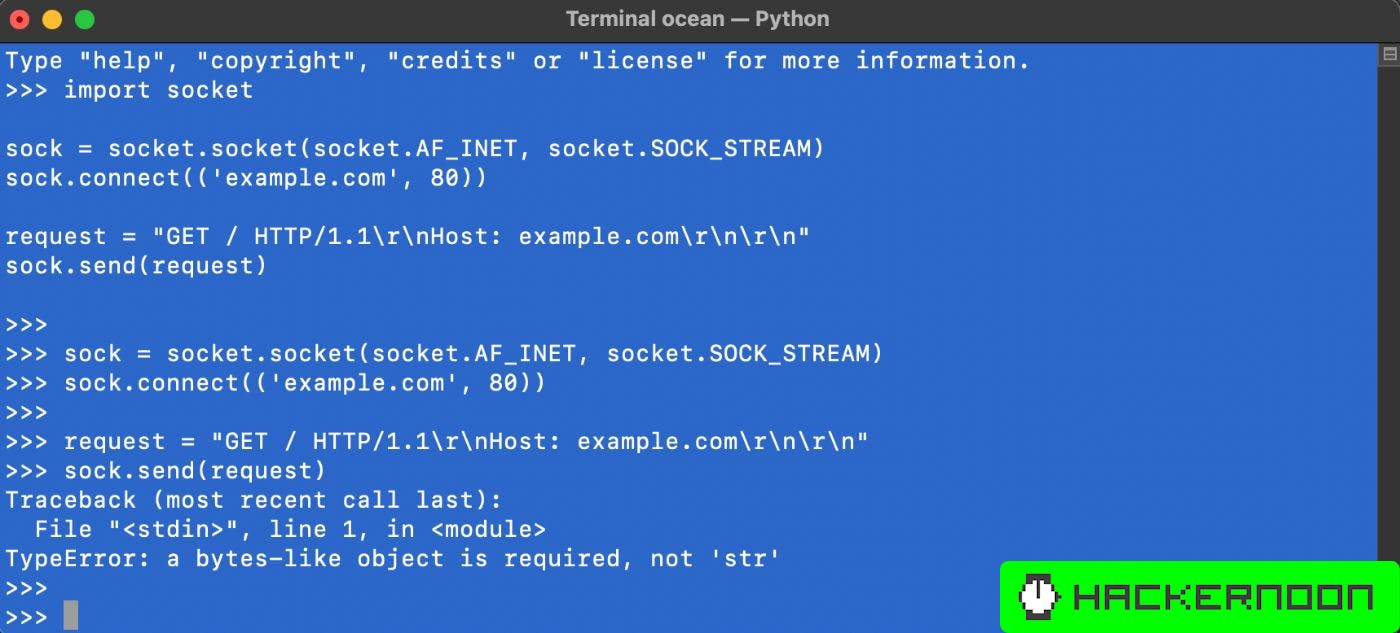










![Solved] TypeError: A Bytes-Like object Is Required, not 'str' – Be on the Right Side of Change Solved] Typeerror: A Bytes-Like Object Is Required, Not 'Str' – Be On The Right Side Of Change](https://blog.finxter.com/wp-content/uploads/2021/04/image-18.png)




![Typeerror a bytes like object is required not str [SOLVED] Typeerror A Bytes Like Object Is Required Not Str [Solved]](https://itsourcecode.com/wp-content/uploads/2023/04/3.png)
![Typeerror a bytes like object is required not str [SOLVED] Typeerror A Bytes Like Object Is Required Not Str [Solved]](https://itsourcecode.com/wp-content/uploads/2023/04/3-1.png)


![Typeerror a bytes like object is required not str [SOLVED] Typeerror A Bytes Like Object Is Required Not Str [Solved]](https://itsourcecode.com/wp-content/uploads/2023/04/4.png?ezimgfmt=rs:352x204/rscb35/ngcb34/notWebP)



![Solved] TypeError: A Bytes-Like object Is Required, not 'str' – Be on the Right Side of Change Solved] Typeerror: A Bytes-Like Object Is Required, Not 'Str' – Be On The Right Side Of Change](https://dclrlzd4gl55u.cloudfront.net/2118/hero?1605640683)
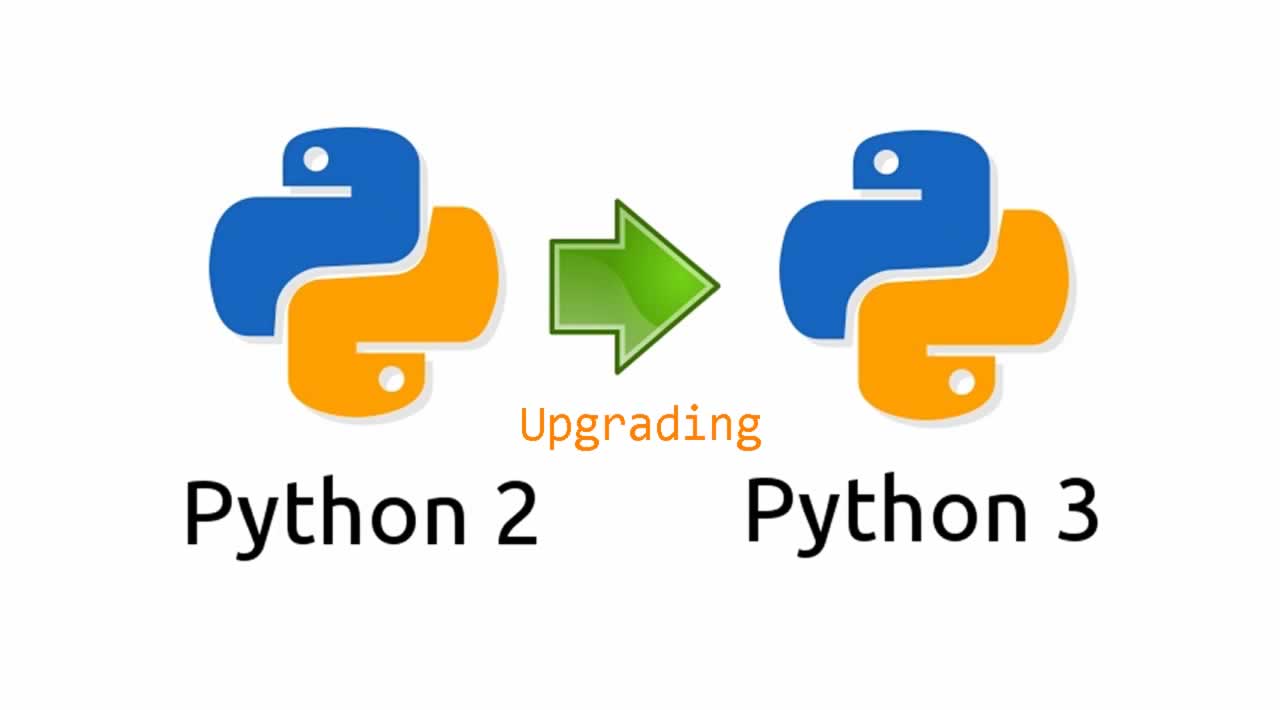



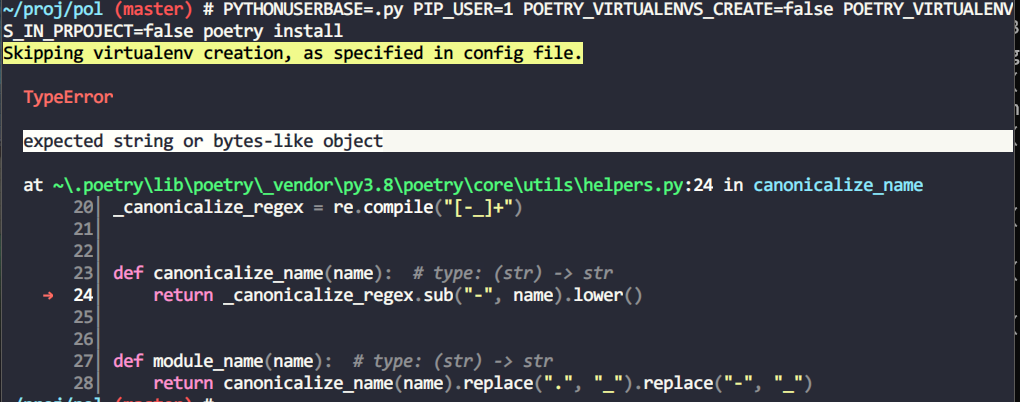







![Solved] TypeError: A Bytes-Like object Is Required, not 'str' – Be on the Right Side of Change Solved] Typeerror: A Bytes-Like Object Is Required, Not 'Str' – Be On The Right Side Of Change](https://blog.finxter.com/wp-content/uploads/2021/01/me.jpg)
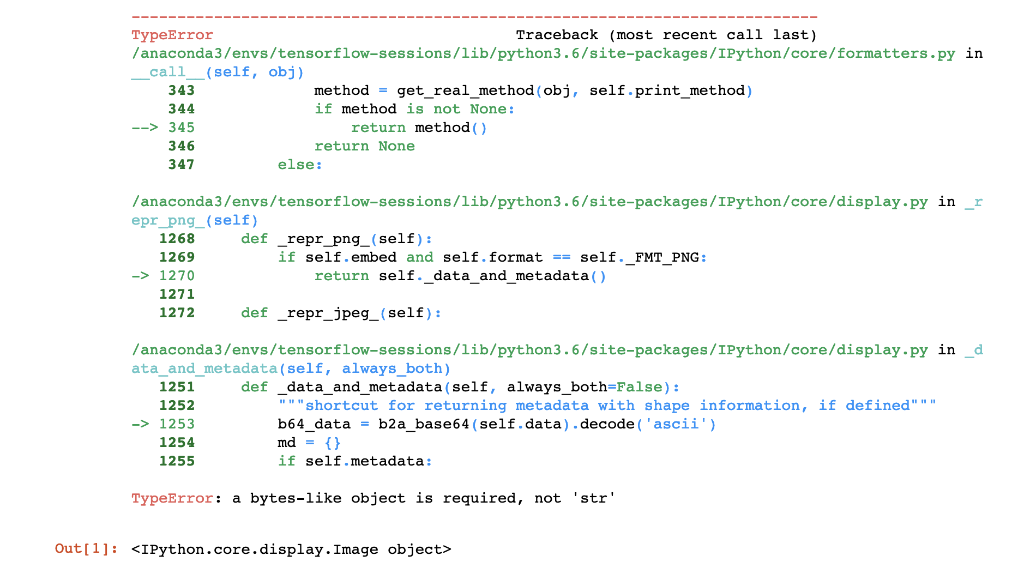

![Typeerror a bytes like object is required not str [SOLVED] Typeerror A Bytes Like Object Is Required Not Str [Solved]](https://itsourcecode.com/wp-content/uploads/2021/01/IT-SOURCECODE_ICON-07.jpg)

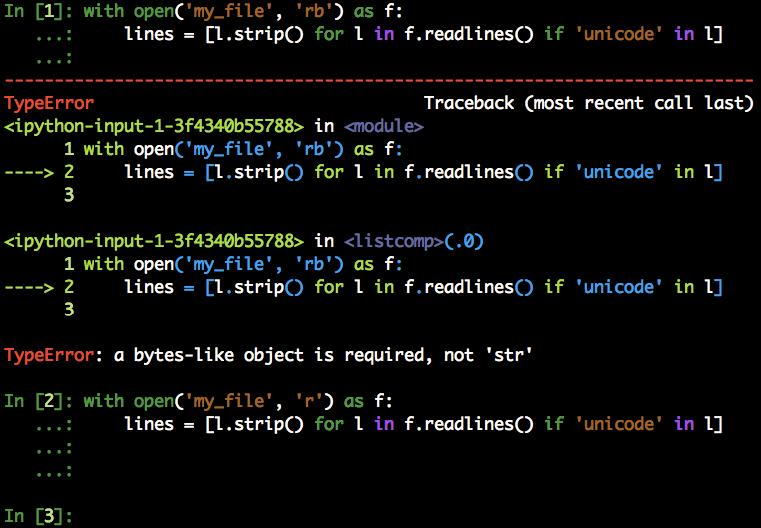

Article link: typeerror a bytes-like object is required not ‘str’.
Learn more about the topic typeerror a bytes-like object is required not ‘str’.
- a bytes-like object is required, not ‘str'” when handling file …
- Fix the typeerror a bytes like object is required not str in Python
- TypeError: a bytes-like object is required, not ‘str’ – bobbyhadz
- Resolving TypeError: A Bytes-like Object is Required, Not ‘str …
- Typeerror a bytes like object is required not str : How to Fix?
- TypeError: a bytes-like object is required, not ‘str’ when writing …
- How to Fix Typeerror a bytes-like object is required not ‘str’
- typeerror: a bytes-like object is required, not ‘str’ – STechies
- Fix the typeerror a bytes like object is required not str in Python
- Byte Objects vs String in Python – GeeksforGeeks
- What is a bytes-like object? – Educative.io
- Python typeerror: a bytes-like object is required, not ‘str’ Solution
- Giải quyết TypeError Python: a byte-like object is required, not …
See more: nhanvietluanvan.com/luat-hoc